FWCM 03: A lively Berlin Endgame!
After two rather uneventful draws, the fans got their money's worth when Magnus Carlsen created winning chances from an equal position and put the challenger in grave difficulty. Sergey Karjakin stayed trued to his tag of being a tenacious defender and did not give up right until the very end. Magnus missed a few winning chances and the game ended in a draw. We have the entire game annotated along with critical positions and pictures from the venue.
Game 03: Draw in the Berlin
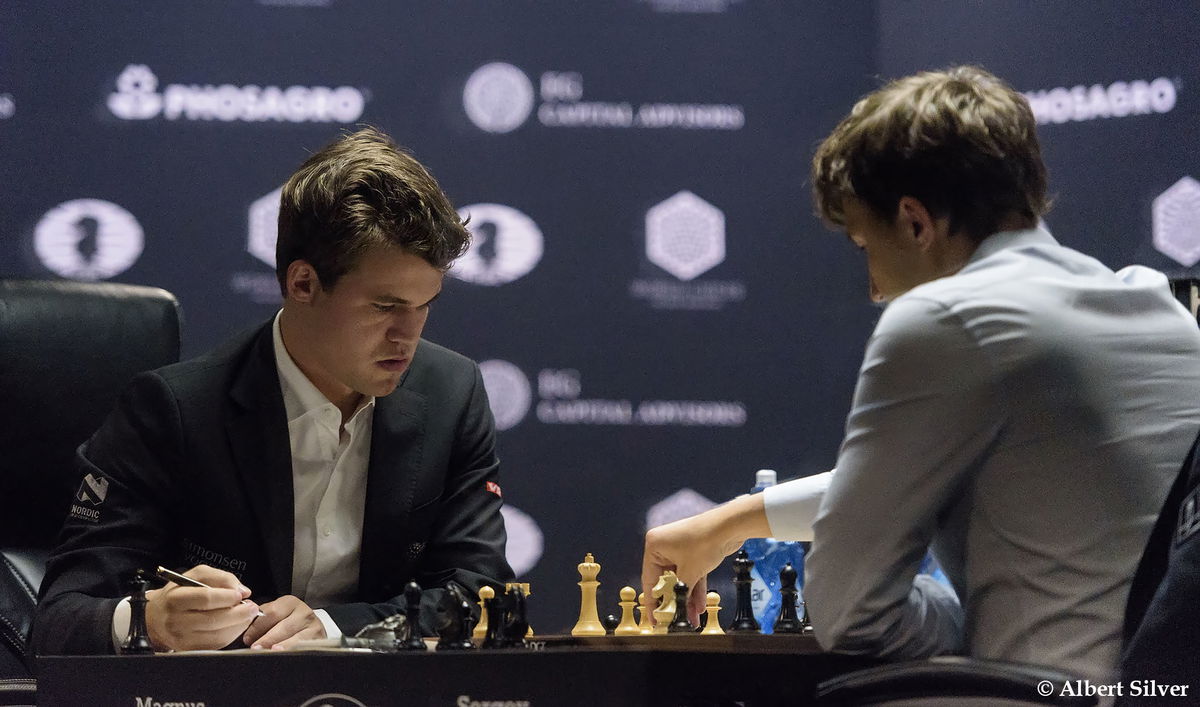
India's top GM Sasikiran Krishnan said before the third game that Magnus would open with 1.e4. And he was 100% right. Magnus played 1.e4 and after four moves the crowd was on the edge of their seats! "Please not another Berlin Endgame!" would have been the thought on everyone's mind! But what Magnus chose was even worse.
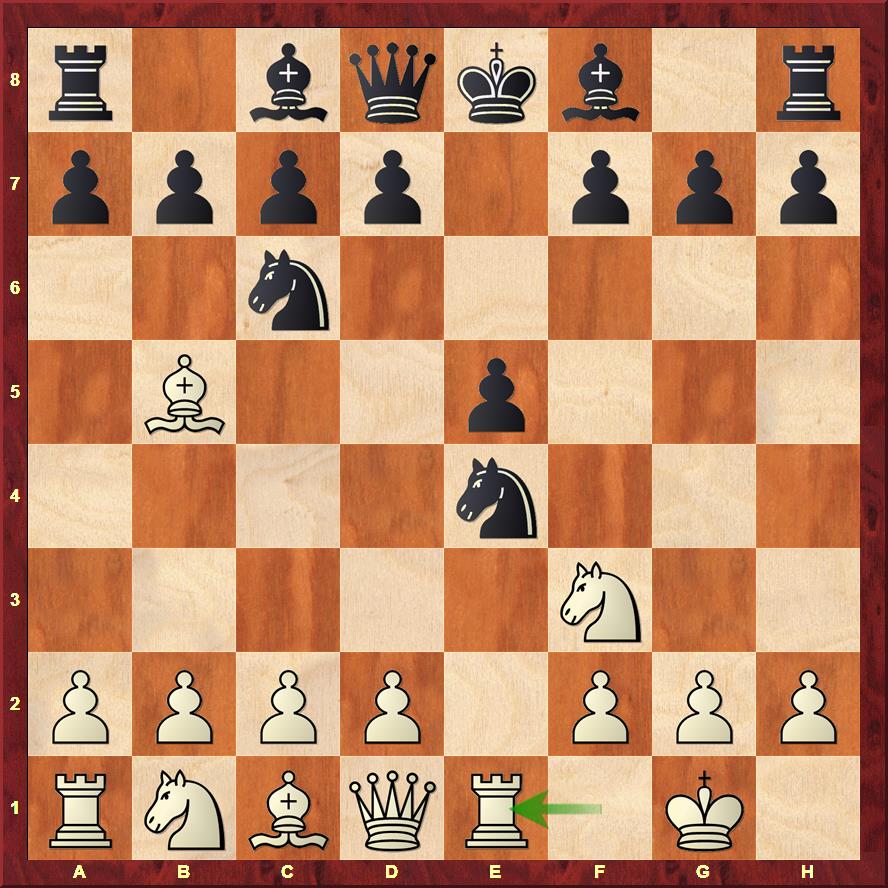
5. Re1 is the grand daddy of all the drawn openings in chess. The draw ratio in this system is so high that whenever White plays it people start to think that the player has come with peaceful intentions to the game.
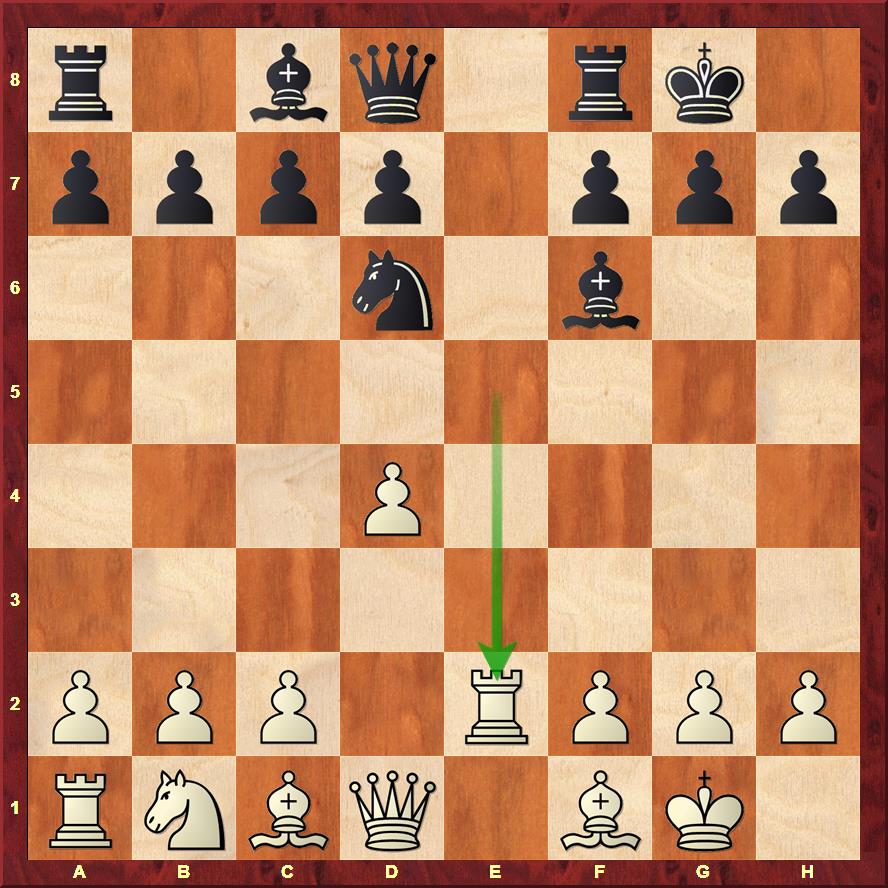
With Re2 Magnus clearly showed that he had some new ideas up his sleeve in this line. In 2014 Biel Masters, MVL had played his rook to e2 against Giri in a similar position and won the game. MVL revealed that he had found this idea on a flight while playing against the PlayMagnus App. No wonder Magnus was motivated to try it out something similar in the World Championship.
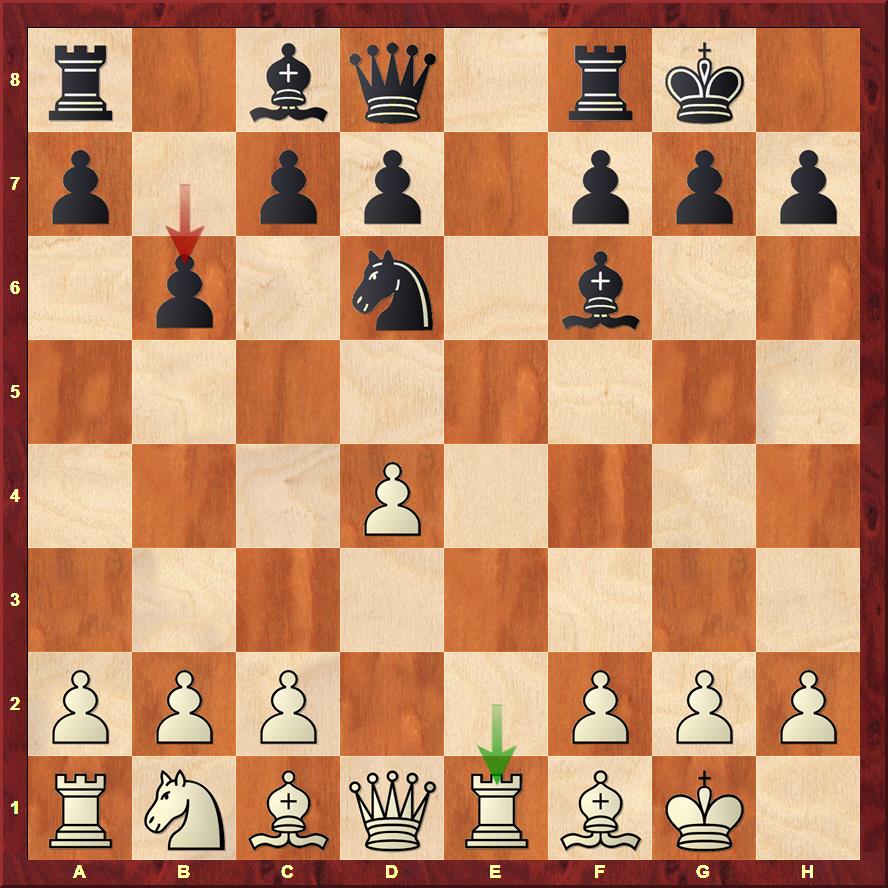
So Rxe5 - Re2 - Re1 what was all this about? The move Re2 provoked Black into playing b6 and now after Re1, the most common plan for Black is Nf5 followed by d5. In such a scenario it would be better to have the pawn back on b7, as b6 does nothing more than to create some light squared weaknesses in Black's camp.
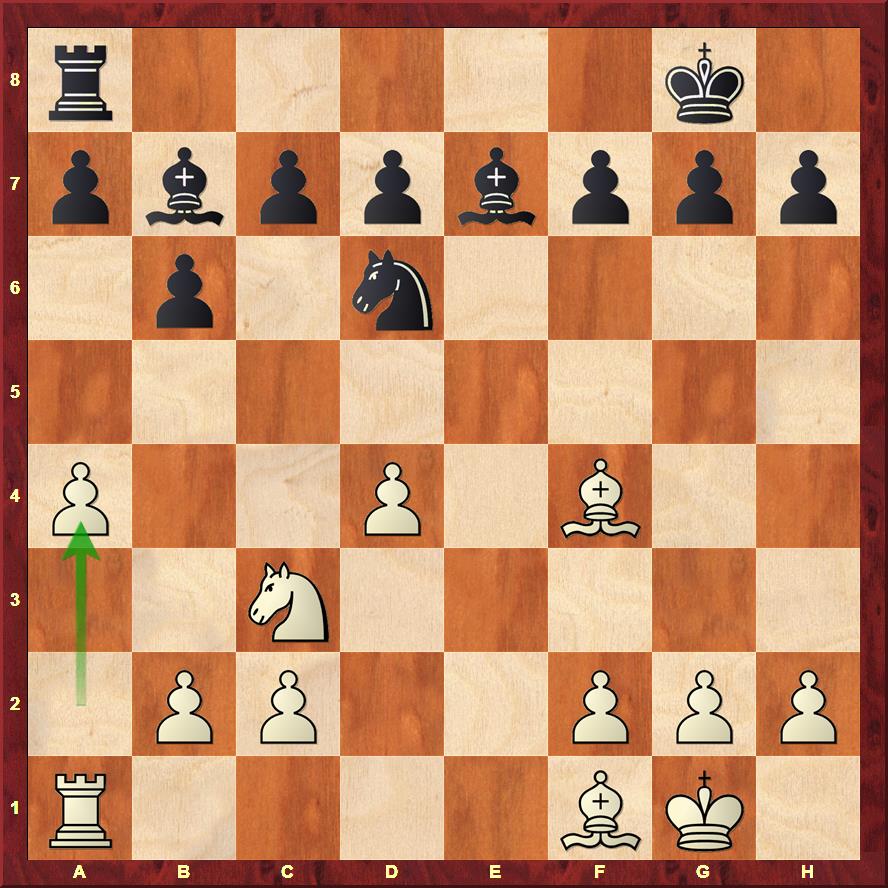
One of the reasons why everyone considers Magnus to be an artist is because the way he presses in equal positions is simply unique. The move a4 trying to probe the queenside proved to be very useful. It not only poses a question to the opponent, but also gains space. If a5 is played, b5 is slightly weakened and if a6 is played, then the a6 pawn remains a tad weak. All in all such moves are the ones which the computer doesn't appreciate but makes all the difference.
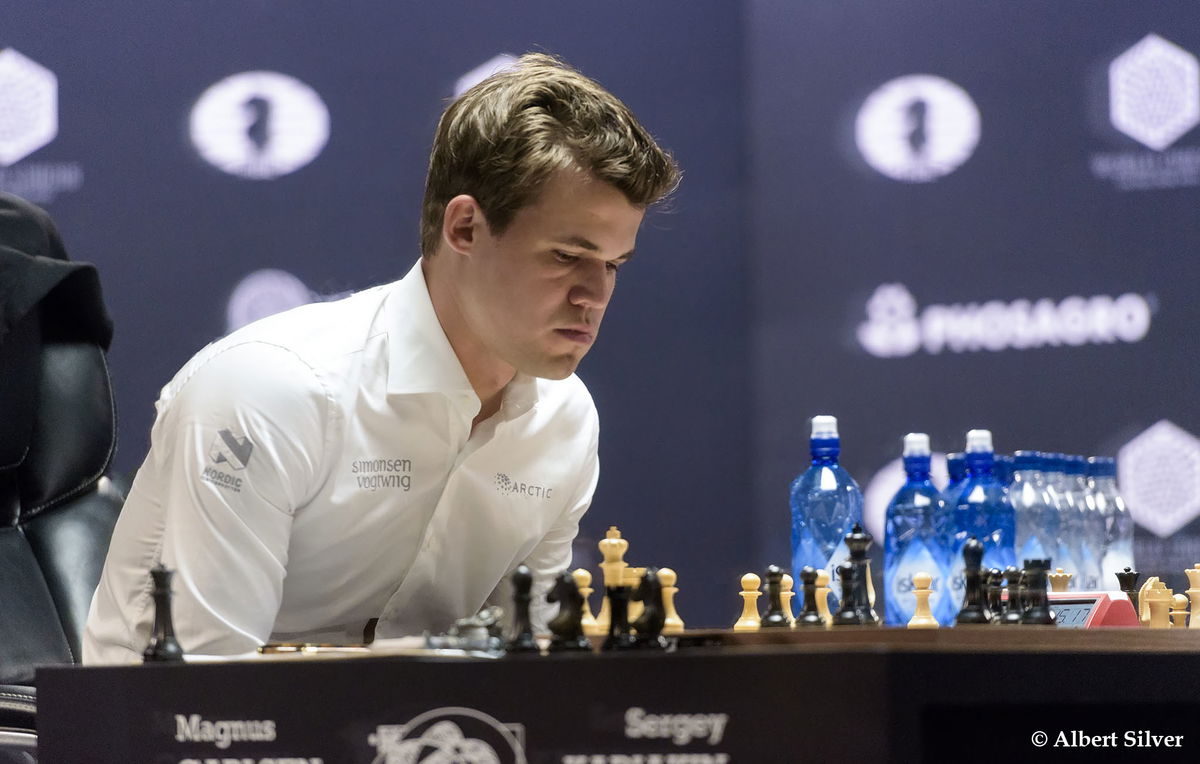

What do you think about this endgame? Which side is better. Truth be told, this is round about even. There is absolutely no reason why the bishop should be worse than the knight. However, Magnus made sure that he had superior minor piece when he fixed the f5 pawn and transferred his knight to e3. In short he made use of his imbalances much better than Sergey.
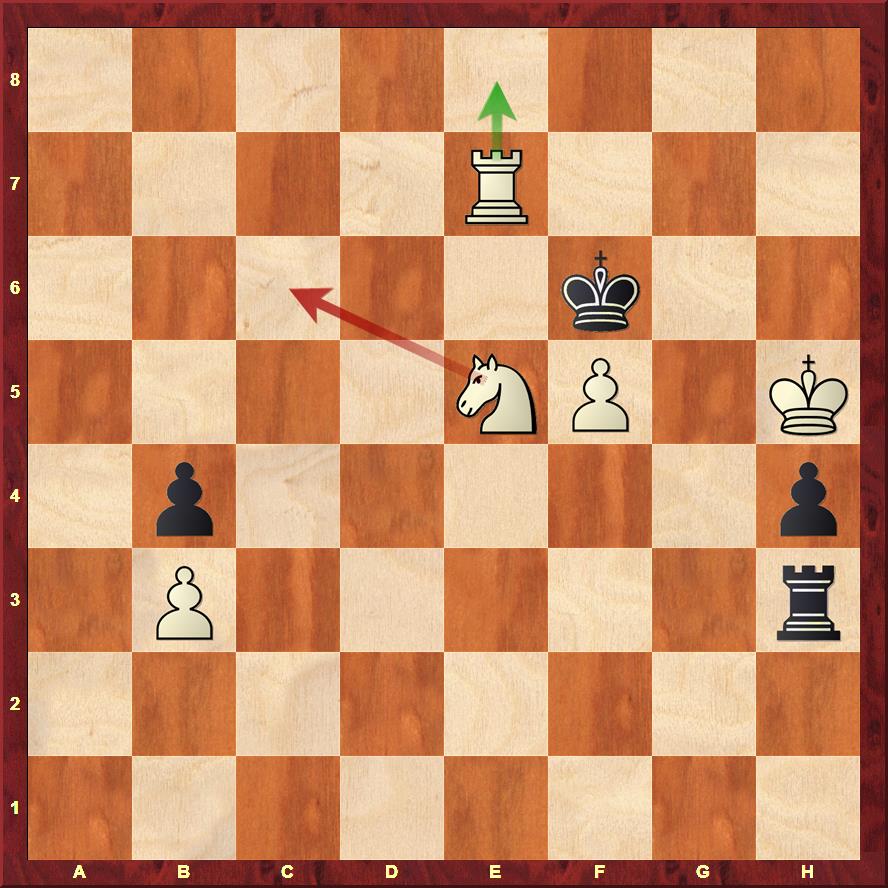
Magnus lost his chance for a win when instead of 70.Re8 he chose 70.Nc6. As the analysis below show 70. Re8 was the winning move!
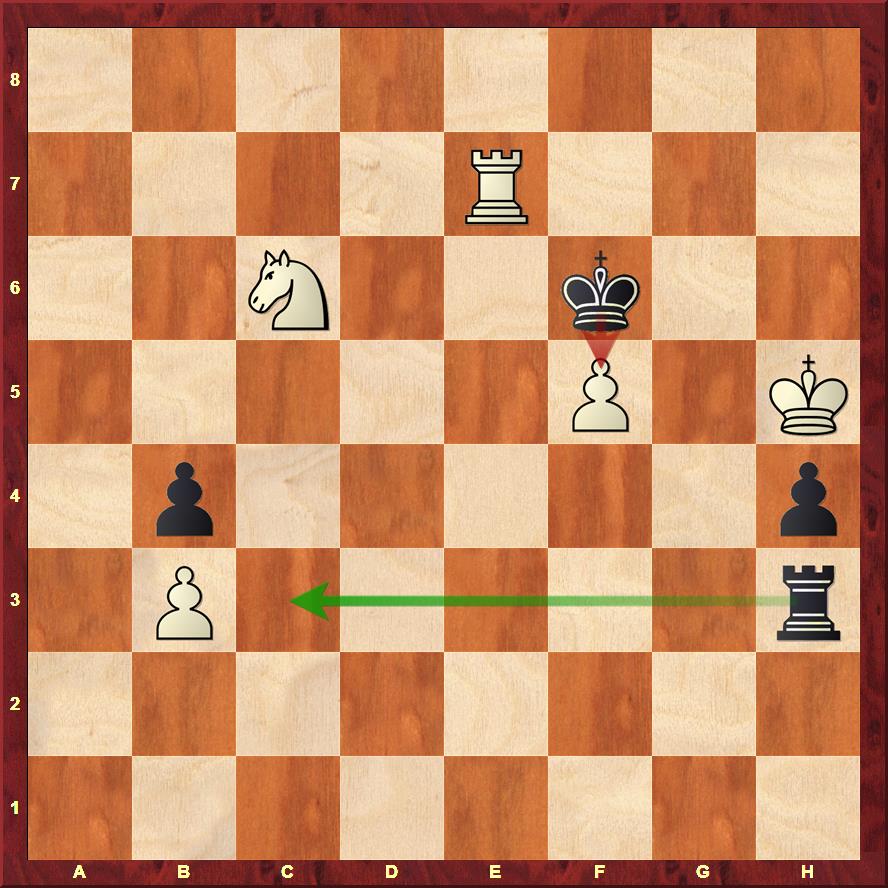
Karjakin immediately returned the favour when instead of 70...Rc3, he chose 70...Kxf5. Carlsen was winning once again.

Rb7 was the final mistake as Karjakin rushed his king towards his h-pawn. Rf7+ followed by Kg4 would have given White the full point.
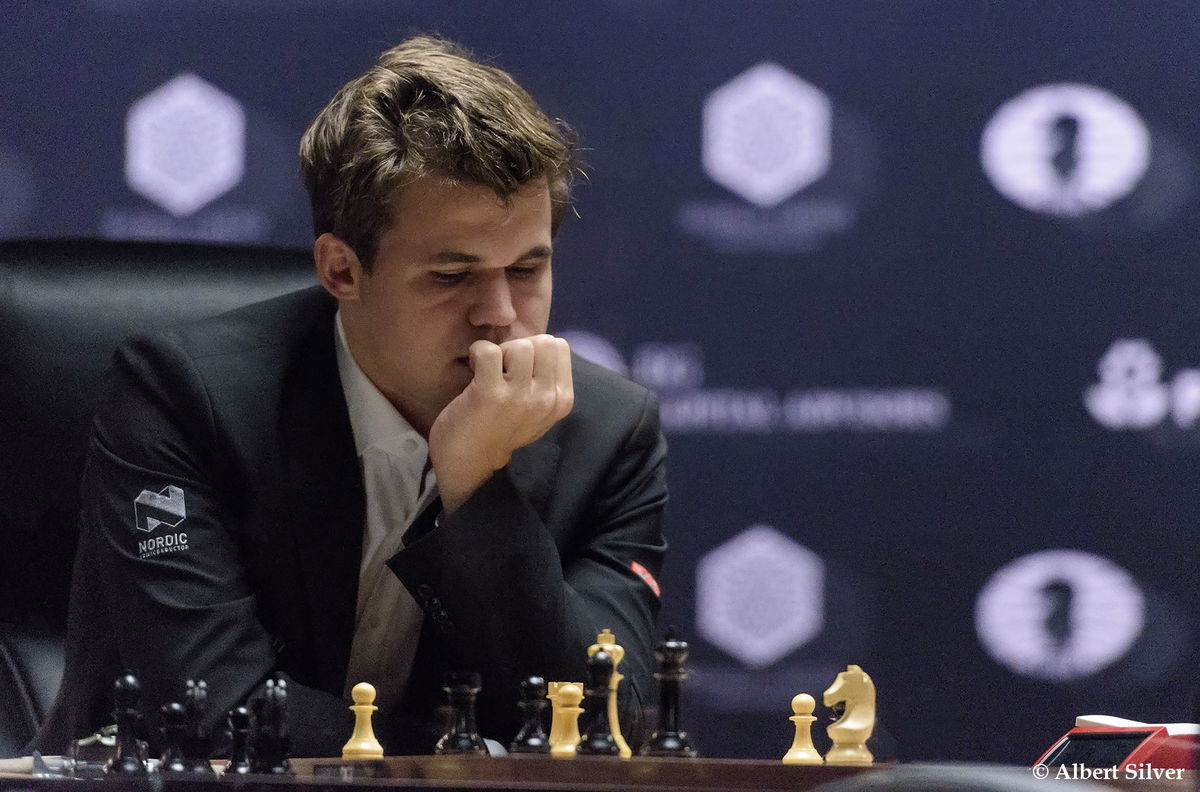

[Site "New York"]
[Date "2016.11.14"]
[Round "3"]
[White "Carlsen, Magnus"]
[Black "Karjakin, Sergey"]
[Result "1/2-1/2"]
[ECO "C67"]
[WhiteElo "2857"]
[BlackElo "2769"]
[Annotator "Sagar Shah"]
[PlyCount "156"]
[EventDate "2016.??.??"]
[EventType "match"]
[EventCountry "USA"]
[SourceTitle "playchess.com"]
[Source "ChessBase"]
[TimeControl "40/6000+30:20/3000+30:900+30"]
e4 is what he is going to try for. Is this his main move for the World
Championship Match, or will he keep rotating stuff? Game 5 will tell.} e5 {
[%emt 0:00:09]} 2. Nf3 {[%emt 0:00:00]} Nc6 {[%emt 0:00:03]} 3. Bb5 {[%emt 0:
00:00]} Nf6 {[%emt 0:00:10] The Berlin! Many amateurs ask the reason why top
players more often than not go for the Berlin? The answer is pretty simple. It
is the most solid opening and Black's chances of equalizing are very high.} 4.
O-O {[%emt 0:00:00]} (4. d3 {is nowadays the most popular way to avoid the
Berlin.}) 4... Nxe4 {[%emt 0:00:05]} 5. Re1 {[%emt 0:00:05][%cal Gf1e1] The
last time Magnus played this against Vishy it was when he was leading the
match and wanted to ensure that he maintains his lead. This time, however, he
uses the move Re1 for a long game where he has some chances to press for an
edge.} (5. d4 {leads to the main lines of the Berlin Endgame.}) 5... Nd6 {
[%emt 0:00:07]} 6. Nxe5 {[%emt 0:00:11]} Be7 {[%emt 0:00:06]} 7. Bf1 {[%emt 0:
00:06]} Nxe5 {[%emt 0:00:37]} 8. Rxe5 {[%emt 0:00:04]} O-O {[%emt 0:00:07]} 9.
d4 {[%emt 0:00:11]} (9. Nc3 Ne8 10. Nd5 Bd6 11. Re2 {This move Re2 was first
played by Maxime Vachier-Lagrave against Anish Giri in Biel 2014. It was for
the first time that someone had retreated their rook to e2 rather than the
natural e1. Maxime wrote in the New in Chess Magazine that he found this idea
against Play Magnus App when he was travelling in the flight. So Magnus was
involved in MVL finding the novelty as well!}) 9... Bf6 {[%emt 0:00:26]} 10.
Re2 $5 {[%emt 0:00:07][%cal Ge5e2] Inspired by MVL? Well Magnus wants to
provoke b6 from Sergey before coming back to e1. But even if b6 is not played
then the e1 square is kept free and can be used by the queen or the rook on a1.
} b6 {[%emt 0:25:08] Sergey thought for a very long time to execute this move.
The idea is clear. He wants to play Ba6.} (10... Nf5 11. d5 (11. c3 d5 {
looks fine for Black.}) 11... d6 12. c3 {has been played in two games by
Kovalenko and Vallejo Pons. Magnus might have had some new ideas here.}) 11.
Re1 $5 {[%emt 0:00:11] This is still not a new move. It has been played in
Kasimdzhanov-Melkumyan, 2016. Many people wondered as to why Magnus retreated
his rook first to e2 and than to e1. Didn't he provoke Sergey into playing b6?
The most common setup for Black in such games is to put his pawn on d5. But
with the move b6 already played the light squares like c6, a6 start to become
a little weak. Magnus found a tempo to be a good investment for provoking
these weaknesses.} (11. b3 Ba6 12. c4 Nf5 13. Bb2 d5 {is already better for
Black.}) 11... Re8 $146 {[%emt 0:04:11] The first new move of the game.} (11...
Nb7 12. Na3 d5 13. c3 Nd6 14. Nc2 a5 15. Ne3 Nf5 16. Ng4 Bg5 17. Bd3 Bxc1 18.
Rxc1 Nd6 19. h3 Re8 20. Qf3 Bxg4 21. Qxg4 g6 22. Re5 c6 23. Rce1 Qc7 24. R1e3
Kg7 25. h4 f6 26. Rxe8 Rxe8 27. Rxe8 Nxe8 28. h5 f5 29. Qg5 Nd6 30. hxg6 {
1/2-1/2 (30) Kasimdzhanov,R (2704)-Melkumyan,H (2622) Germany 2016}) 12. Bf4 {
[%emt 0:02:02] Magnus was still pretty much blitzing his moves which showed
that he was still in prepared territory.} Rxe1 {[%emt 0:00:13]} 13. Qxe1 {
[%emt 0:00:02]} Qe7 {[%emt 0:06:06]} (13... Bxd4 $2 14. Bxd6 cxd6 (14... Bxb2
15. Bxc7 $16) 15. Qe4 Bxb2 16. Qxa8 Bxa1 17. Ba6 $18) 14. Nc3 {[%emt 0:15:08]
The first real think for Magnus. He was surely trying to decide between
whether to first take the queen and play Nc3, or directly Nc3. Now Nd5 is a
threat and hence, this square must be controlled.} Bb7 {[%emt 0:00:33]} 15.
Qxe7 {[%emt 0:02:16]} Bxe7 {[%emt 0:00:14]} 16. a4 {[%emt 0:00:26] So what
have we got here? A symmetrical pawn structured position with equal number of
pieces. Looks like another dull draw, right? Well, pressing in such positions
is an art and Magnus is the best in the business. I call it an art because
take this position and you will find that nothing forcing is happening. Most
of the people would have gone for Re1 because it attacks the bishop. But
Magnus plays a4!? He thinks that the inclusion of a4 will be good for him. If
Black plays a5 then b5 would be weak and if he goes a6 as in the game then he
has to worry about an attack on that pawn later on. Such positions are not
boring. They may be slow but certainly filled with rich ideas.} a6 {[%emt 0:04:
14]} (16... a5 {Sergey didn't want to weaken his b5 square and that's pretty
logical.}) 17. g3 {[%emt 0:05:08]} g5 {[%emt 0:09:00]} ({Perhaps safer was}
17... Re8 18. Re1 (18. Bh3 Bf6 19. Bxd7 Rd8 20. Bh3 Bxd4 $11) 18... Bf6 19.
Rxe8+ Nxe8 $11) 18. Bxd6 {[%emt 0:06:03]} (18. Be3 f5 {Followed by Bf6 and Re8
is an excellent position for Black.}) 18... Bxd6 {[%emt 0:00:13]} 19. Bg2 $1 {
[%emt 0:12:20] Whenever your opponent has the bishop pair, it makes sense to
exchange one of them to diminish the value of the other.} Bxg2 {[%emt 0:00:08]}
20. Kxg2 {[%emt 0:00:02][%csl Gc3,Gd6] Who is better here? Well the position
is dynamically equal. But is it a dead draw? No! The main reason is the
imbalance in the position. White has a knight against Black's bishop. In
principle there is no reason why Black should be worse here. His bishop is not
bad there are no real weaknesses. The better player will get an advantage in a
position like this.} f5 {[%emt 0:10:24] Karjakin doesn't take over the e-file
because he sees that he can do it later with Kf7 and Re8 as well.} 21. Nd5 {
[%emt 0:07:43]} Kf7 {[%emt 0:00:16]} 22. Ne3 {[%emt 0:08:03]} Kf6 {[%emt 0:00:
39]} (22... f4 23. Nc4 fxg3 24. hxg3 {The bishop cannot move because Ne5 would
be strong and giving up the bishop and doubling the pawns is not what Sergey
would have liked to do.} Re8 25. Nxd6+ cxd6 26. Ra3 $14) 23. Nc4 {[%emt 0:03:
26]} Bf8 {[%emt 0:01:59]} (23... Re8 24. Nxd6 cxd6 25. Ra3 {It's not a
position that you would like to try against Magnus. He will find ways to make
you suffer right until the very end!}) 24. Re1 {[%emt 0:03:47] By some smart
moves with the knight, Magnus has taken over the e-file. Now Kf7, Re8 is not
possible.} Rd8 {[%emt 0:02:05]} (24... b5 25. Ne5 $1 (25. axb5 $6 axb5 26. Ne5
d6 27. Nc6 d5 28. c3 Ra2 $132) 25... d6 26. Nc6 $1 d5 27. c3 {White is clearly
better.}) 25. f4 {[%emt 0:05:43] Fixing the weakness on f5 and preparing to
attack it later on.} gxf4 {[%emt 0:17:26]} 26. gxf4 {[%emt 0:00:02]} b5 {
[%emt 0:00:11]} 27. axb5 {[%emt 0:00:14]} axb5 {[%emt 0:00:01]} 28. Ne3 {
[%emt 0:01:31]} (28. Ne5 c5 (28... d6 29. Nc6 Ra8 30. d5 $16) 29. Rd1 cxd4 30.
Rxd4 Ke6 {Black is fine.}) 28... c6 {[%emt 0:01:16]} 29. Kf3 {[%emt 0:00:54]} (
29. Ra1 {could have been an idea, but the rook has nothing much to attack
after penetrating to a7.}) 29... Ra8 {[%emt 0:02:02]} 30. Rg1 {[%emt 0:06:55]
Somehow the knight is doing much more than the bishop. The bishop is just
sitting on f8, while the knight on e3 is constantly putting pressure on f5.
The threat now is Rg5.} Ra2 {[%emt 0:04:53]} (30... Bh6 {seemed pretty good.
The bishop not only defends the g5 square but also attacks the f4 pawn. But it
is true that it is quite passive on h6.}) 31. b3 {[%emt 0:01:22]} c5 {[%emt 0:
02:37]} (31... h6 $6 32. h4 $16 {with the idea of h5 would be pretty strong.})
(31... Bh6 32. Rg8 $1 $14 {That's the reason why the rook should have been on
a8.}) 32. Rg8 {[%emt 0:05:47]} (32. Rg5 cxd4 33. Rxf5+ Ke6 (33... Kg7 34. Ng4
Rxc2 35. Rxb5 $14) 34. Rxf8 dxe3 35. Rc8 $16 {Black will lose a pawn and will
have to suffer in the endgame.}) 32... Kf7 {[%emt 0:04:43]} 33. Rg2 {[%emt 0:
00:59]} cxd4 {[%emt 0:00:27]} (33... Kf6 $2 34. dxc5 Bxc5 35. Nxf5 $1 {Magnus
is always so alert for such tricks!} Kxf5 36. Rg5+ Ke6 37. Rxc5 $16) 34. Nxf5 {
[%emt 0:00:34]} d3 $1 {[%emt 0:00:07] Active defence by Karjakin. By giving up
his d-pawn, he weakens the b3 pawn.} 35. cxd3 {[%emt 0:00:07]} Ra1 {[%emt 0:01:
19]} (35... Ra3 {was better as after} 36. Rb2 Bb4 37. Ne3 Bc3 38. Rb1 Ra2 39.
Nd5 Rd2 40. Ke3 b4 {This seems more active for Black.}) 36. Nd4 {[%emt 0:04:38]
} b4 {[%emt 0:00:09]} 37. Rg5 {[%emt 0:03:47] It's so difficult to Magnus in
such positions. He always finds the best way to push. White is not only a pawn
up but also has his eyes set on the weaknesses on d7 and h7.} Rb1 {[%emt 0:10:
06]} 38. Rf5+ {[%emt 0:01:55]} Ke8 {[%emt 0:00:25]} 39. Rb5 {[%emt 0:02:46]} (
39. Rh5 Bg7) 39... Rf1+ {[%emt 0:02:04]} (39... Bg7 40. Rb8+ $1 {A small check
can do big damage! Now Ke7 is met with Nf5+ and Kf7 with Rxb4. Later the d7
pawn will be hanging.} Kf7 41. Rxb4 Bxd4 42. Rxd4 $18 {[%csl Rd7]}) 40. Ke4 {
[%emt 0:00:00]} Re1+ {[%emt 0:02:19]} 41. Kf5 {[%emt 0:02:14]} (41. Kd5 Rd1)
41... Rd1 {[%emt 0:01:52]} 42. Re5+ {[%emt 0:10:59]} Kf7 {[%emt 0:01:57]} 43.
Rd5 {[%emt 0:01:05]} Rxd3 {[%emt 0:06:26]} 44. Rxd7+ {[%emt 0:02:12]} Ke8 {
[%emt 0:01:55]} (44... Kg8 45. Ke4 Rd1 46. Rb7 $18 {All of White's pieces are
active and he is clearly better.}) 45. Rd5 {[%emt 0:00:33]} Rh3 {[%emt 0:00:30]
} 46. Re5+ {[%emt 0:04:21]} Kf7 {[%emt 0:01:16]} 47. Re2 {[%emt 0:00:55] The
dust has settled a bit. White has kept his activity and is a pawn up.} Bg7 {
[%emt 0:13:05]} 48. Nc6 {[%emt 0:05:47]} Rh5+ {[%emt 0:07:28]} (48... Rxb3 $2
49. Nd8+ $1 Kf8 (49... Kg8 50. Re8+ Bf8 51. Ne6 $18) 50. Ne6+ Kf7 51. Ng5+ Kf8
52. Nxh7+ Kf7 53. Ng5+ Kf8 54. Kg6 $18) 49. Kg4 {[%emt 0:06:44]} Rc5 {[%emt 0:
00:14]} 50. Nd8+ {[%emt 0:04:05]} (50. Nxb4 Rb5 51. Re4 h5+ 52. Kf3 Bf8 53. Nd3
Rxb3 {Black is still worse but he is able to get rid of the main pawn. This
should be a draw.}) 50... Kg6 {[%emt 0:00:08]} 51. Ne6 {[%emt 0:02:11]} h5+ {
[%emt 0:02:01]} 52. Kf3 {[%emt 0:00:07]} Rc3+ {[%emt 0:00:05]} 53. Ke4 {
[%emt 0:01:51]} (53. Re3 Bf6 {And White would not like to take on c3.}) 53...
Bf6 {[%emt 0:00:18]} (53... Rxb3 54. Rg2+ $18) 54. Re3 {[%emt 0:05:23]} h4 {
[%emt 0:03:06]} 55. h3 {[%emt 0:01:00]} Rc1 {[%emt 0:04:28]} 56. Nf8+ {[%emt 0:
10:56]} Kf7 {[%emt 0:00:20]} 57. Nd7 {[%emt 0:00:05]} Ke6 {[%emt 0:02:25]} 58.
Nb6 {[%emt 0:00:46]} (58. Nxf6 Kxf6 $11) 58... Rd1 {[%emt 0:00:56]} 59. f5+ {
[%emt 0:00:08]} Kf7 {[%emt 0:01:00]} 60. Nc4 {[%emt 0:00:00]} Rd4+ {[%emt 0:13:
07]} 61. Kf3 {[%emt 0:01:15]} Bg5 {[%emt 0:00:18]} 62. Re4 {[%emt 0:06:55]}
Rd3+ {[%emt 0:00:14]} 63. Kg4 {[%emt 0:00:06]} Rg3+ $6 {[%emt 0:00:06]} (63...
Bf6 {was much better.} 64. Re6 Rg3+ (64... Rxb3 65. Nd6+ Kg7 66. Ne8+ $18) 65.
Kf4 Bg5+ 66. Ke4 Rxb3 $14) 64. Kh5 {[%emt 0:00:04]} Be7 {[%emt 0:02:07]} 65.
Ne5+ {[%emt 0:01:28]} Kf6 {[%emt 0:01:14]} 66. Ng4+ {[%emt 0:00:10]} Kf7 {
[%emt 0:03:25]} 67. Re6 {[%emt 0:05:20]} Rxh3 {[%emt 0:05:40]} 68. Ne5+ {
[%emt 0:01:09]} Kg7 {[%emt 0:00:02]} (68... Kf8 69. Ng6+ $18) 69. Rxe7+ {
[%emt 0:03:41]} Kf6 {[%emt 0:00:02][%cal Ge7e8,Re5c6]} 70. Nc6 $2 {[%emt 0:01:
34][%cal Rf6f5,Gh3c3]} (70. Re8 $1 {was the win that Magnus missed.} Kxf5 71.
Nc6 Rh1 72. Nd4+ Kf4 73. Re2 h3 74. Kh4 h2 75. Ne6+ Kf3 76. Rc2 {And White
simply wins the game.} Re1 77. Ng5+ $18) 70... Kxf5 $2 {[%emt 0:02:25]} (70...
Rc3 $1 {Attacks the knight and after} 71. Re6+ Kxf5 72. Nd4+ Kf4 73. Kxh4 Rd3 {
The b3 pawn will soon be lost and we will be in R vs R+N territory which
should be drawn.}) 71. Na5 $1 {[%emt 0:03:50] Now Magnus is back on track
towards the win.} Rh1 {[%emt 0:00:10]} 72. Rb7 $2 {[%emt 0:00:30]} (72. Rf7+
Ke4 73. Kg4 Ra1 74. Nc6 Rb1 75. Rf4+ Kd5 76. Nxb4+ Kd6 77. Rf3 $18) 72... Ra1
$1 {[%emt 0:03:36]} 73. Rb5+ {[%emt 0:00:29]} (73. Nc6 h3 $11) 73... Kf4 $1 {
[%emt 0:00:04]} 74. Rxb4+ {[%emt 0:00:22]} Kg3 {[%emt 0:00:20] Black has given
up the b-pawn but now his h-pawn supported by the king is extremely strong.}
75. Rg4+ {[%emt 0:03:50]} Kf2 {[%emt 0:00:02]} 76. Nc4 {[%emt 0:02:02]} h3 {
[%emt 0:00:09]} 77. Rh4 {[%emt 0:00:30]} Kg3 {[%emt 0:00:08]} 78. Rg4+ {
[%emt 0:00:08]} Kf2 {[%emt 0:00:06] A great fight. Magnus pressed as hard as
he could, while Sergey defended with all his might. Just what we were
expecting. Magnus must be kicking himself for missing the win, while Sergey
would be happy with his defensive effort. This fourth game would be crucial.
Because when Anand drew such a marathon endgame against Magnus in game four of
the World Championship 2013, the next game Magnus struck back with a win!
Karjakin must remain careful.} 1/2-1/2
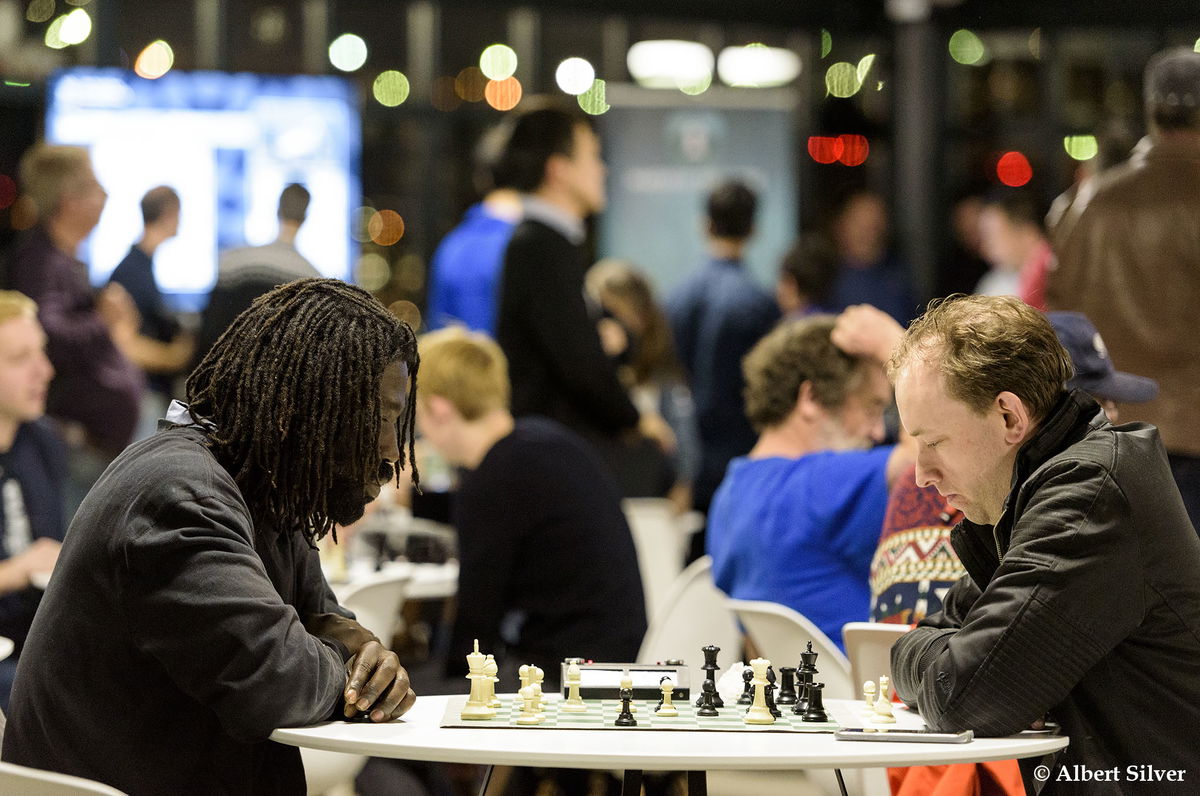
Related:
- FWCM 2016 02: Carlsen's mysterious rook moves
- FWCM 2016 01: Carlsen's benign Trumpowsky!
- FWCM 2016: Press Conference and Opening Ceremony

